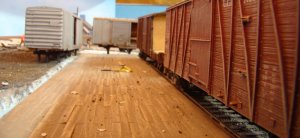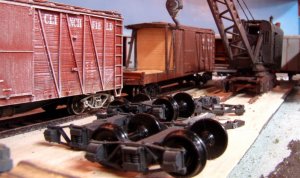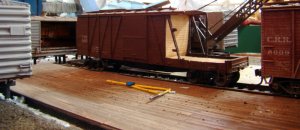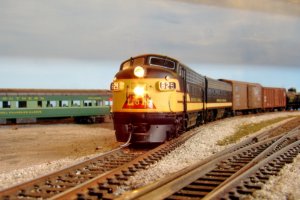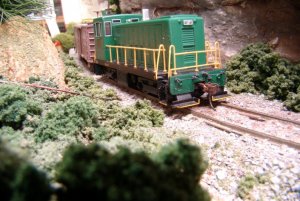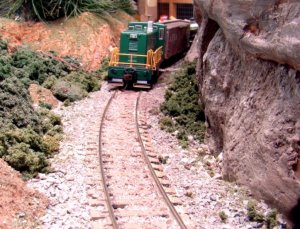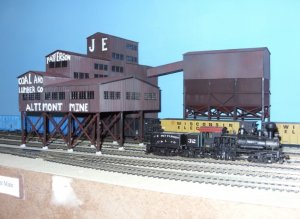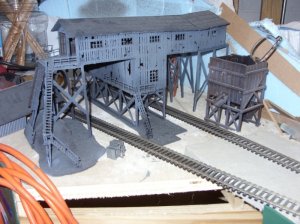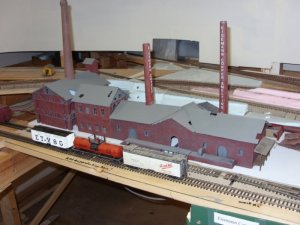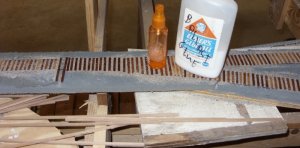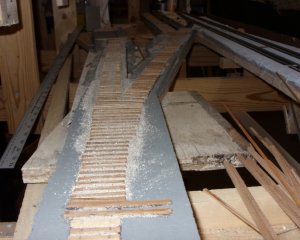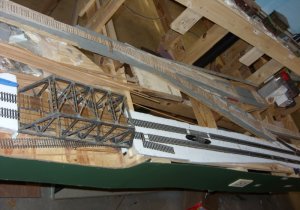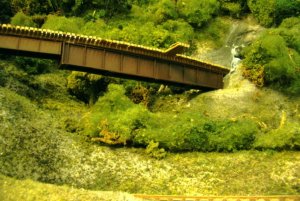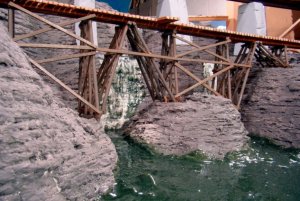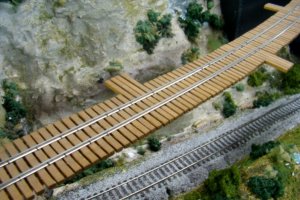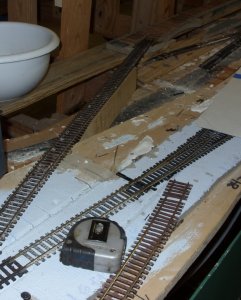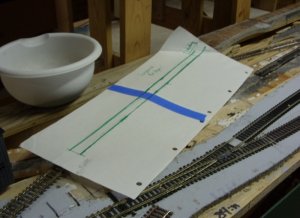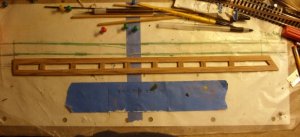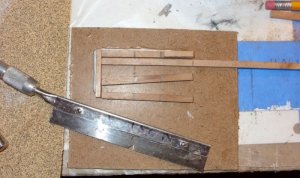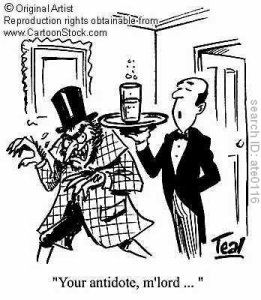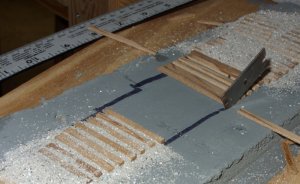
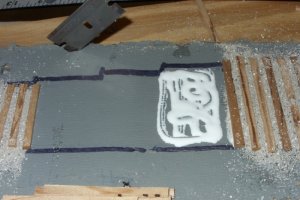
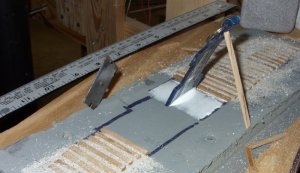
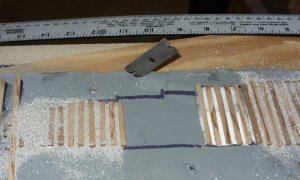
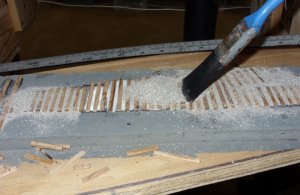 and now to the imprtant stuff!!!
and now to the imprtant stuff!!!
Hand laying track tutorial #l
1. Your sub-roadbed has to be stout, and as impervious as possible to expansion and contraction due to heat and humidity changes.
spline road bed is ok, if done correctly. Note it is very easy to build spline roadbed that lists to port or starboard. Invest in a line level, a tiny level made to hang on a string between two points. they will fin on your roadbed, and your roadbed's cross section should be dead level (un less you are attempting a superelevated curve- but we won't cover that until the master class. This is important with all types of sub-roadbed all of the joints between plywood, or other materian need to be smooth ( a belt sander helps here). also If you have a splice in the plywood sub road bed, don't put a splice in the homasote or the rail in that same spot. stagger the joints , and try to keep all of them away from vertical curves (where there is a change in grade).
Homasote works best for handlaying. If you can't find a local source for 4x8 sheets of homasote, you can get homabed from the California roadbed company. That product is actually preferable as it is milled to size for several scales and has the proper profile milled in.
After you have hour homasote roadbed installed it must be painted with a couple coats to seal it. Homasote is basically press board made from paper mache. It is a huge moisture attractor. if it is not sealed with paint it will soak up room moisture, and expand, causing you problems. When you go to ballast, it will suck up the water in the glue, and the glue won't set right. If you don't seal it, it will suck up moisture, and your spikes will rust away after several years, and you won't be able to fix it ! (sure you can re spike it, but You cant seal it once the ties are on) You have one chance to do it right.. My favorite Boss's Dad had a saying that is pertinent " If you don't have time to do it right now- how will you ever have time to fix it later." If you decide to hand lay track; that should be your motto!
PAINT YOUR HOMOSOTE TO SEAL IT!!!!! if you don't, you will be spending a lot of time and hard effort for something that will not last. Hand laying track takes a lot of time and effort. it gives you a look that is impossible for anyone to match with plastic track. When you have done it enough to get good, and you have enough room and good planning , your track can flow organically, look and operate better than possible with commercial track; but to get there perfection is needed at every level from sub-roadbed to road bead, to sealing the roadbed to installing the ties, and spiking the rail.
For the purposes of this tutorial, we are going to assume that you know how to due sub road bed and roadbed. I glue Homabed or strips of homasote to the plywood subiroadbed wit white glue Homabed I tack in place with extra long thumb tacks while the glue sets, and homasote I glue and screw in place using sheet rock screws.
I then paint the homosote with acrylic paint to seal it. after the paint is dry I draw lines to show where the outside edges of the ties go. at switches, I draw the edges of the ties as well. In may cases I draw those in free hand, and build the switch to match. At the sawmill at the club, I am dedicated to making this area operate as well or better than the best track on the club layout. To that end I am using #6 switches throughout. I used some Atlas #6 switches as templates to mark the location of the tie ends, and the rail location at the end. In this Sawmill complex, we are planning on operating big trains. if you are wanting to run big trains, you need gentile curves, and you don't want switches with a lower number than six.
I have jigs that help me cut ties for the track. the jigs have marks on them that show approximate rail position. I stick the strip of wood in the jig, mark the rail location, and then cut the tie to size. I glue the ties on the tracks leading up to the switch first, and then glue in the switch ties.
At he location of the points, I have used a drill to drill out a slot for a manual switch actuator (on my own RR I use Minni DPST switches as ground throws, but I'm using Blue point rod actuated throws @ the club , and we will se how that goes.). Once I have the ties in for the track leading up to the switch, I cut switch ties to fit, following the outline traces off of the Atlas switch. When in doubt, I try to err on the side of a longer tie. a tie that is longer than it needs to be is no problem, and can be trimmed later for aesthetic . If your tie isn't long enough, it is a problem.
I have had problems getting uniform ballasting job done on completed track, and since there is glue on the roadbed when I glue the ties down it is a simple matter to add some ballast, and spread it with a brush . later I spray it down with wet water (water with a little dishwashing detergent added to knock out the surface tension); and flood the whole area with diluted white glue to secure the ballast.
When the glue is dry, I can lightly sand the ties, which will knock off any of the ballast that is on top of the ties, giving me a nice smooth surface to spike the rail.
I have some photos of the ballasting glue operation, but those will have to wait till tomorow, as I am turning into a pumpkin!
Bill Nelson
Edited note. old homasote would suck up moisture and hold it. thats why I used to paint it. I understand the modern stuff does not. cut off a small chunk of the homasote, and throw it in a bucket of water for a couple days. if it expands, and is heavier, you need to paint it. if you find it after a couple day, and it is not larger and heavier, it is the nes stuff, and does not need to be sealed ( guess what I paint it any way, old habits die hard!)


